These Dog Breeds Didn’t Look Like This 100 Years Ago!
Of the 70 million homeless pets there are in the U.S., only around eight million of them get put in shelters where more often than not, many of them end up getting euthanized due to overcrowding. Sadly, only 20 percent of Americans go to local shelters to adopt a new pet. Most prospective dog owners, for example, will often seek out dog breeders who sell a "superior" pet.
Pure Bred Dogs Are Not As Superior As You May Think
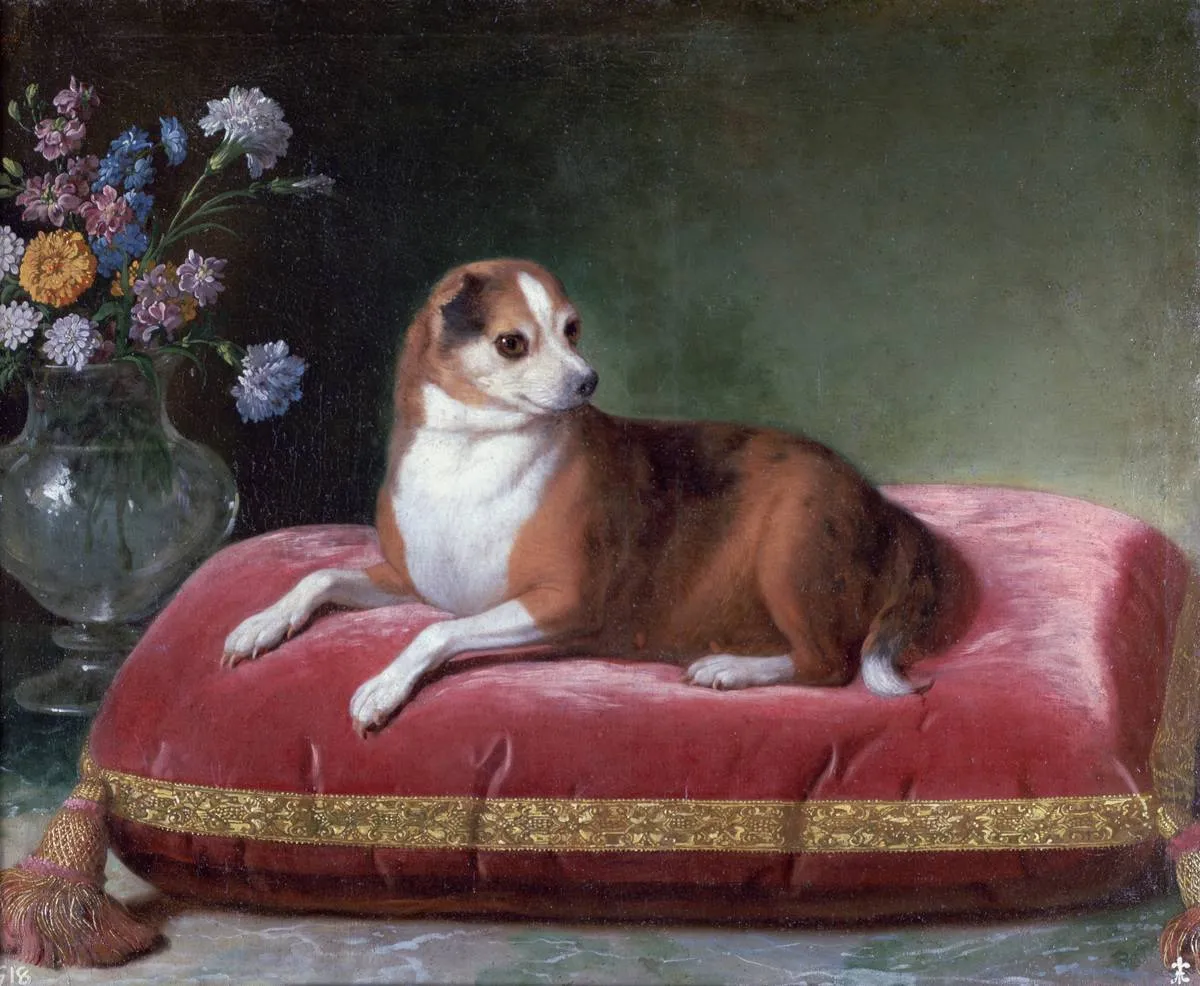
Even if a dog breeder uses the most humane practices for dog breeding, the idea in itself goes against natural selection and the process of evolution. Even if a dog isn't inbred, it can still suffer from a myriad of health problems way down the line as a result of a breeder's attempt to create the highest-quality dog of any one breed.
Breeders from centuries ago, of course, didn't take this into consideration and as a result, many of today's common dog breeds are not representative of their ancient ancestors! See how your favorite breeds have transformed after centuries of pure breeding practices.
Basset Hounds Then

The use of scent hounds for hunting goes back to the days of Ancient Egypt, as well as Classical Greece and Rome. The Basset Hound's sixth-century ancestor is said to have belonged to St. Hubert of Belgium. It wasn't until the sixteenth century that Jacques du Fouilloux referred to the progeny of St. Hubert as the "basset" dog.
The dog's short stature easily lent itself to accompanying hunters on foot, in contrast to the use of larger dogs by hunters on horseback. The modern Basset Hound's forebear is said to have been bred by Everett Millais in nineteenth-century England.
Basset Hounds Now

Today's Basset Hounds are noticeably different from their nineteenth-century forebearers. Having much shorter legs with excess skin, a curved back, and droopier eyes, today's Basset Hounds may not be the best hunting companions (though they are still sometimes used as such in England and France).
In fact, their back structure makes them vulnerable to vertebral medical problems, and their eye shape is associated with problems like entropion and ectropion (i.e., inward and outward facing eyelids, respectively). Recently, scientists have pinpointed the growth hormone gene that is responsible for the Basset Hound's unique body shape.
Boxers Then

The boxer is derived from the German Bullenbeisser and the English bulldog breeds. It was initially used as a hunting dog whose unique skill was to capture prey and hold it until it is retrieved by the hunter.
The name "Boxer" allegedly derives from the dog's tendency to stand on its hind legs and play (or "box") with its front paws. During WWI, the Boxer was a trusted companion that was good for guarding, attacking, and carrying supplies. However, it wasn't until after WWII that the Boxer became a household pet after returning soldiers brought it back with them from the front.
Boxers Now
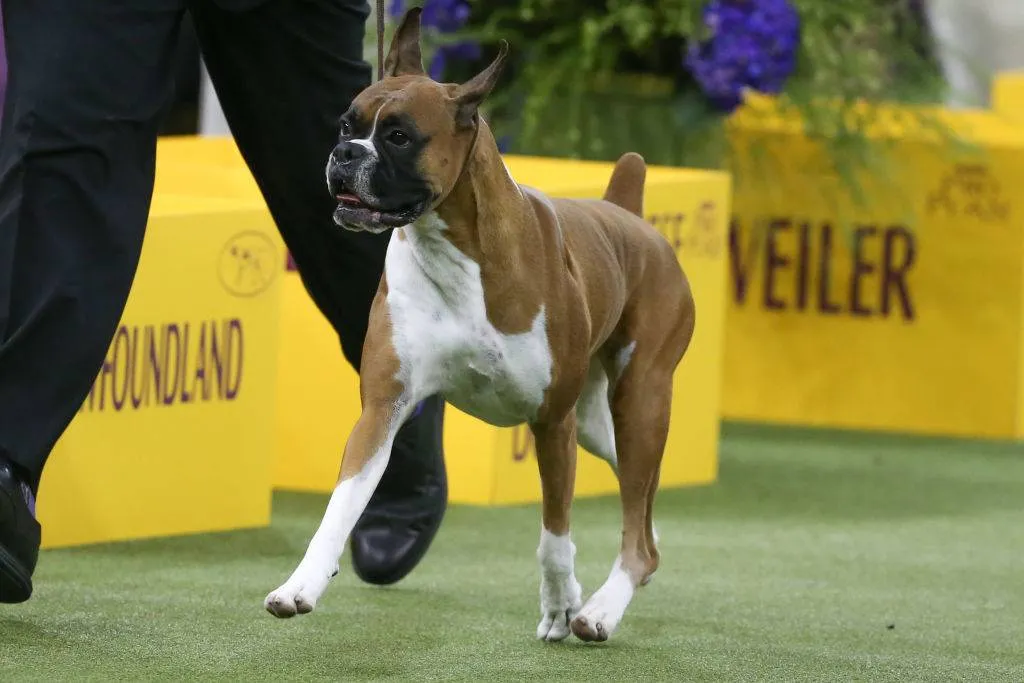
Note the differences between the Boxer of bygone days and the modern version, which sports a larger, more contracted snout that points slightly upward and a longer, upward-pointing tail. Though mostly used as pets and show dogs, today's Boxers are still relied upon as guard dogs and for carrying weight.
On the downside, the Boxer's modern incarnation is prone to a host of medical problems, chief among them being cancer. In fact, the Boxer is one of the most cancer-prone breeds. Another serious issue is the Boxer's diminished capacity to cool down when heated, which leads to behavioral difficulties.
Bull Terriers Then
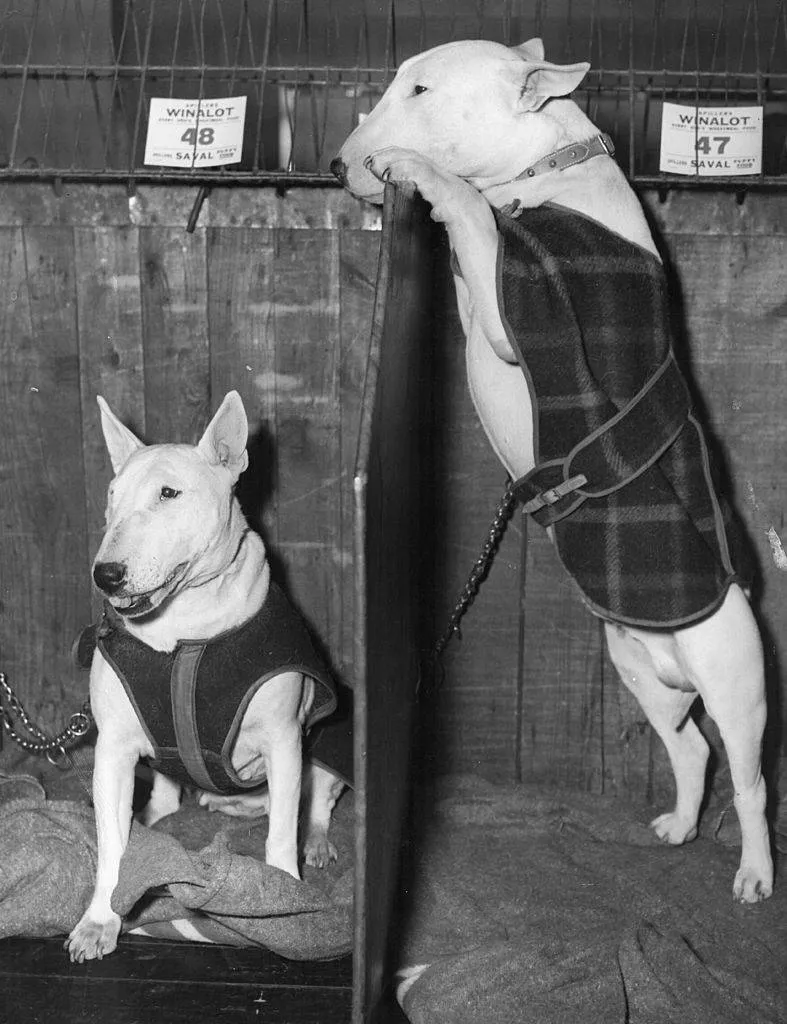
The Bull Terrier had its rise in the early nineteenth-century when the Old English Bulldog was crossed with the Old English Terrier. The breeding was motivated by the desire to create a more agile fighting dog possessing the strength and tenacity of the Bulldog and the speed agility of the Terrier.
Over the years, the Bull Terrier was repeatedly crossed and recrossed with such breeds as the Dalmatian, the Whippet, and the Staffordshire Bull Terrier. Although generally friendly and well-behaved around children and other dogs, the Bull Terrier has been known to do quite well as a fighter when entered in dog fighting competitions.
Bull Terriers Now

The most obvious modification that the modern Bull Terrier exhibits in comparison to its ancestors is the lack of a "stop" in its nose, giving the nose its famous "egg shape." Other modifications include a wider, lower-hanging belly and an increased number of teeth.
As with many of the breeds on our list, the modern Bull Terrier is prone to a number of medical conditions that its nineteenth-century precursors were not, namely: an increased susceptibility to deafness among white Bull Terriers, skin vulnerabilities to insect bites and rashes, and a neurological tendency to compulsively chase its own tail.
Chow Chows Then
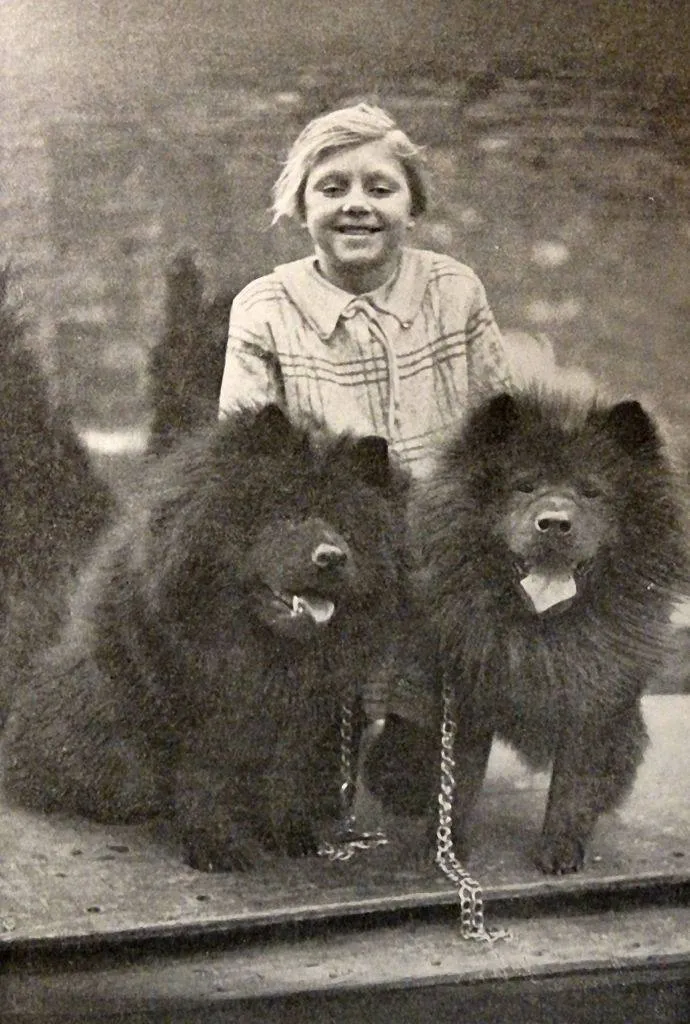
Chow Chows are one of the oldest dog breeds to have survived into modern times. Although one would expect Shepherds or Huskies to be the closest living relatives of wolves, the evolutionary forebears of all dogs, it is actually Chow Chows who claim this title based on recent DNA analysis.
Chow Chows are believed to have come from Asia and were used by Mongolian and Chinese populations as attack dogs, guard dogs, hunting dogs, and even as sources of food. Many of the dog statues that adorn Chinese temples and palaces are believed to have been based on the Chow Chow.
Chow Chows Now

Although Chow Chows were already compared to lions in antiquity, its mane-like fur makes the modern Chow Chow's likeness to the king of the jungle unmistakable. Its mane, however, is just one of the characteristics that differentiate the much denser and longer coat of the modern Chow Chow from that of the old.
The other subtle difference is a somewhat smaller snout, which carries more excess skin. Being one of the oldest breeds, however, most of the Chow Chow's ancestral characteristics are preserved. Medically, Chow Chows are prone to hip dysplasia, autoimmune disease, melanoma, and eye problems such as entropion and glaucoma.
Dachshunds Then
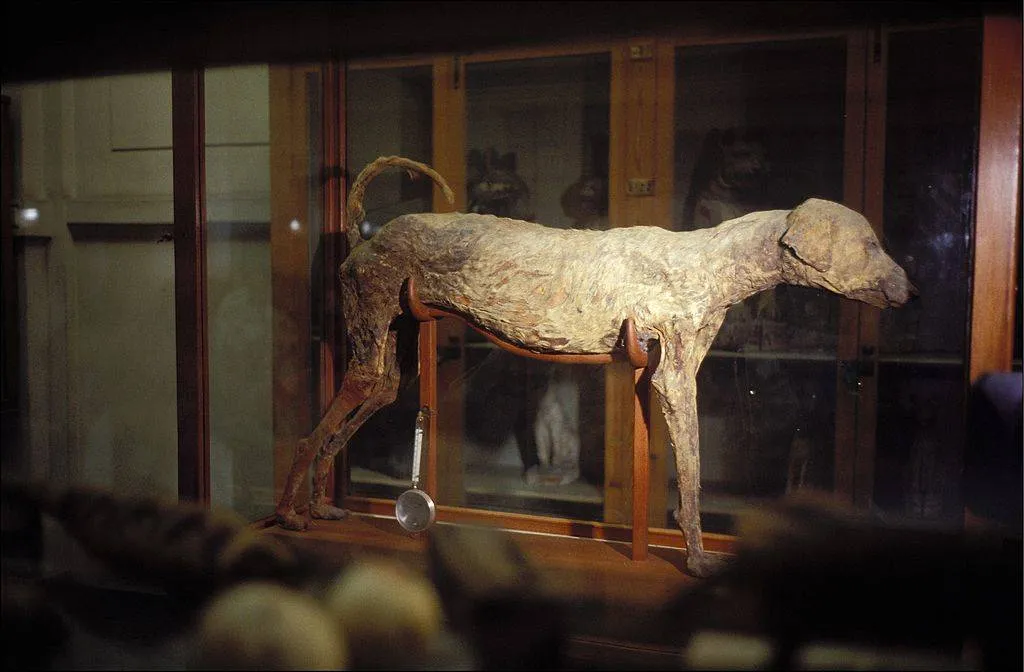
Dogs resembling Dachshunds are depicted among Ancient Egyptian hieroglyphics, and may even have roamed the terrains of ancient China and South America. Recent findings of Dachshund-like remains in Egyptian tombs attest to the veracity of these interpretations.
There is some dispute as to how the modern Dachshund breed came to be, with some arguing that Dachshunds are descended from hounds and terriers, and others insisting that elements of Pointers and Pinschers may have found their way into the breed. Dachshunds are traditionally associated with royalty, especially Queen Victoria, and have been used by nobles for hunting purposes throughout the years.
Dachshunds Now
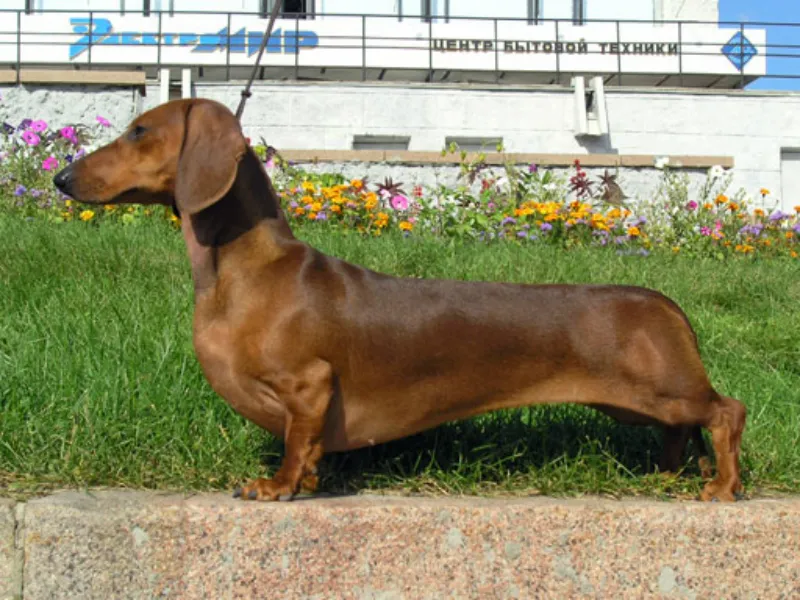
The Dachshund's low belly and pointy tail were bred for the purpose of hunting small animals such as badgers, rabbits, and hares in dense, foliage-rich environments. It is said that when a Dachshund got stuck in some critter's layer, its long tail was used to pop it back out.
Today's Dachshunds exhibit these characteristics to an excessive degree. However low to the ground, the Dachshund's belly never obstructed its locomotion as it does today. Likewise, because of its elongated back and neck, the modern Dachshund is vulnerable to such maladies as intervertebral disc disease and paralysis.
English Bulldogs Then

The Bulldog, as its name suggests, was originally bred for bull-baiting, a gruesome sport that involved tying up a bull and seeing which dog was successful at latching onto the bull's snout and forcing it to the ground.
For this reason, the Bulldog was bred to exhibit a large head with a powerful jaw, and stout, muscular limbs. When bull-baiting on other forms of animal cruelty were outlawed in nineteenth-century England, Bulldogs became household pets. In the United States, however, Bulldogs were still employed by ranchers for the practical purpose of herding and tying up bulls.
English Bulldogs Now
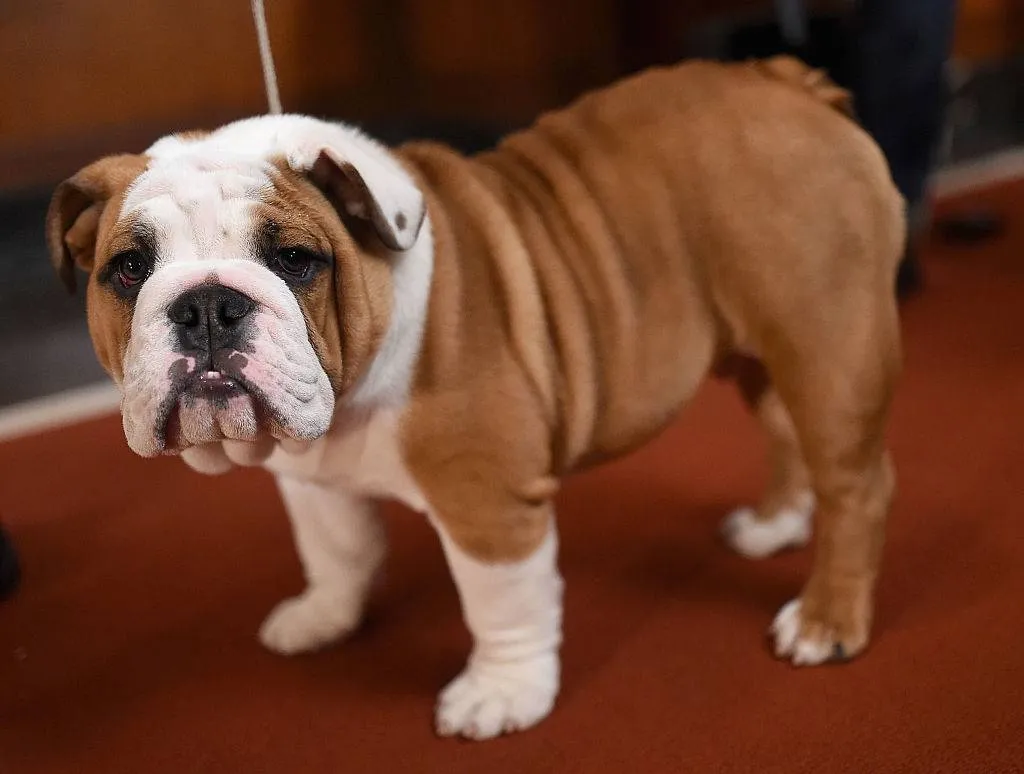
Today's bulldog is known as one of the most disease-prone dogs due to health issues stemming from years of inbreeding. Although it is much more peaceable in its temperament now that it no longer has to bait bulls for a living (which makes it a lovely companion and home protector), its bulbous head, stocky frame, and droopy skin makes it vulnerable to a number of difficulties, including mating difficulty, birthing difficulty, and even difficulty in moving around.
Oddly enough, despite the cruel treatment of Bulldogs in the past, they were much more athletic than they are now. Due to their vulnerability to cancer and heart disease, Bulldogs rarely make it past age seven.
German Shepherds Then
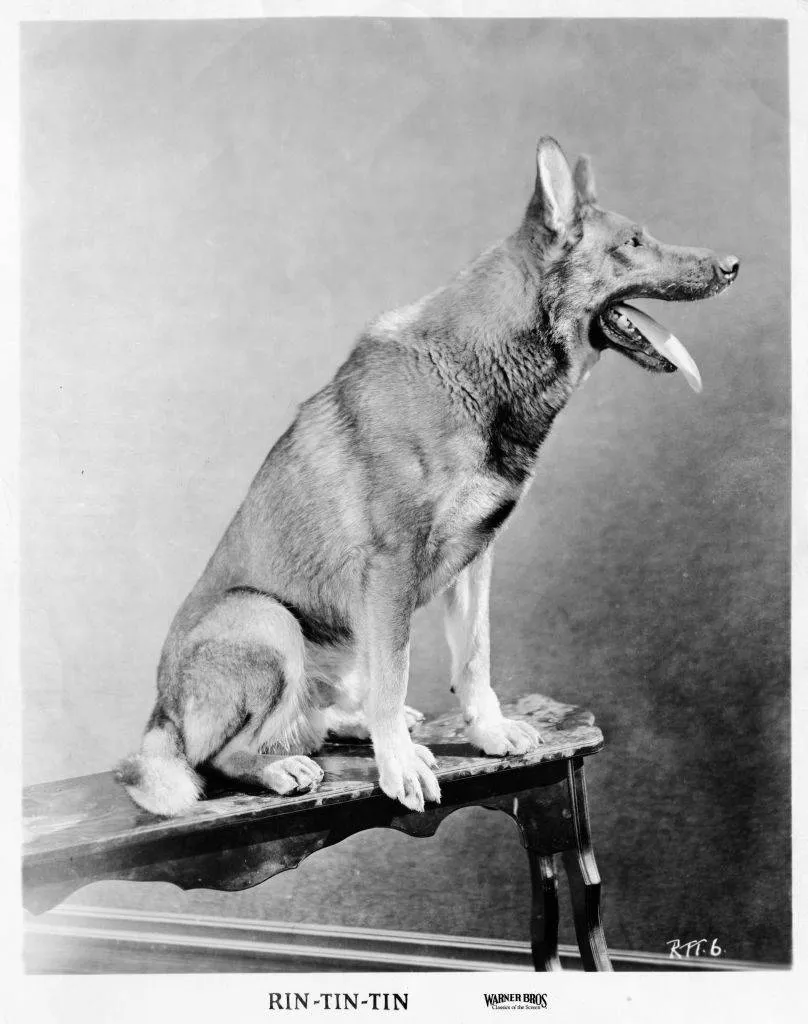
The German Shepherd had its rise in nineteenth-century Germany when a conglomerate of actual shepherds intent on breeding the perfect sheep herding dog formed the Phylax Society. Due to squabbles over whether to prioritize beauty as opposed to working ability, the society disbanded.
One ex-member named Max von Stephanitz was adamant in creating the perfect German sheep herding dog, despite the lack of need for them in an increasingly urbanized environment with fewer predators preying on farm animals. After implementing an arduous breeding (or, more specifically, inbreeding) program, Stephanitz's attempts finally yielded Beowulf, the forefather of all modern German Shepherds.
German Shepherds Now

Perhaps due to the lack of a necessity to breed German Shepherds for utility as sheepdogs, the modern version has lost the sleekness and agility of its graceful ancestors.
Albeit still a gorgeous dog, the modern German Shepherd's belly is too distended, its chest is too round, its gait is too clumsy, its back is too sloping, and its size is too big. It is also vulnerable to conditions such as hip and elbow dysplasia and has a higher likelihood of developing degenerative myelopathy - an inherited neurological condition associated with a loss of communication between the dog's brain and its hind limbs.
Pugs Then
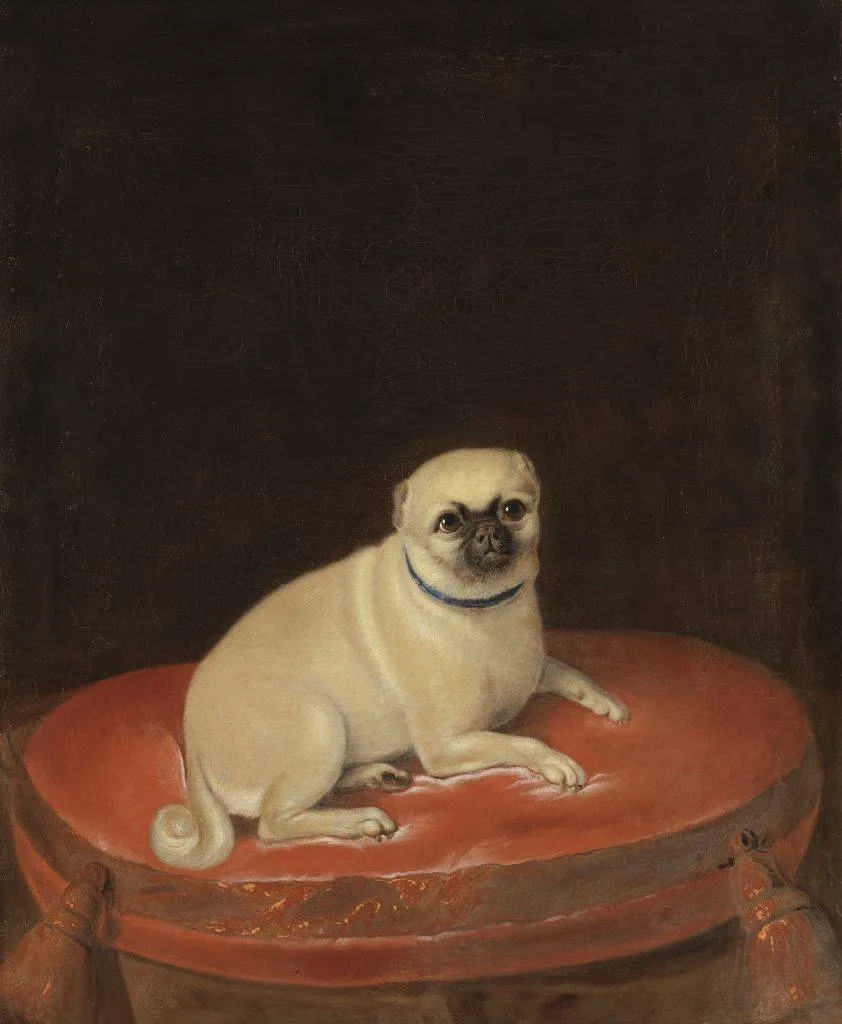
Pugs are originally from China, having been used there as royal dogs, and even venerated as royalty by having their own quarters with guards stationed outside. When Pugs made their way to Europe in the sixteenth century, their popularity immediately took off.
It was said that Italian carriage drivers would dress their Pugs up in the same clothes as themselves and ride alongside them through the streets of Italy. The European royalty also took a liking to Pugs, with Queen Victoria taking an especially active interest in breeding them herself. From its early days, the American Kennel Club recognized the Pug as an accepted breed.
Pugs Now
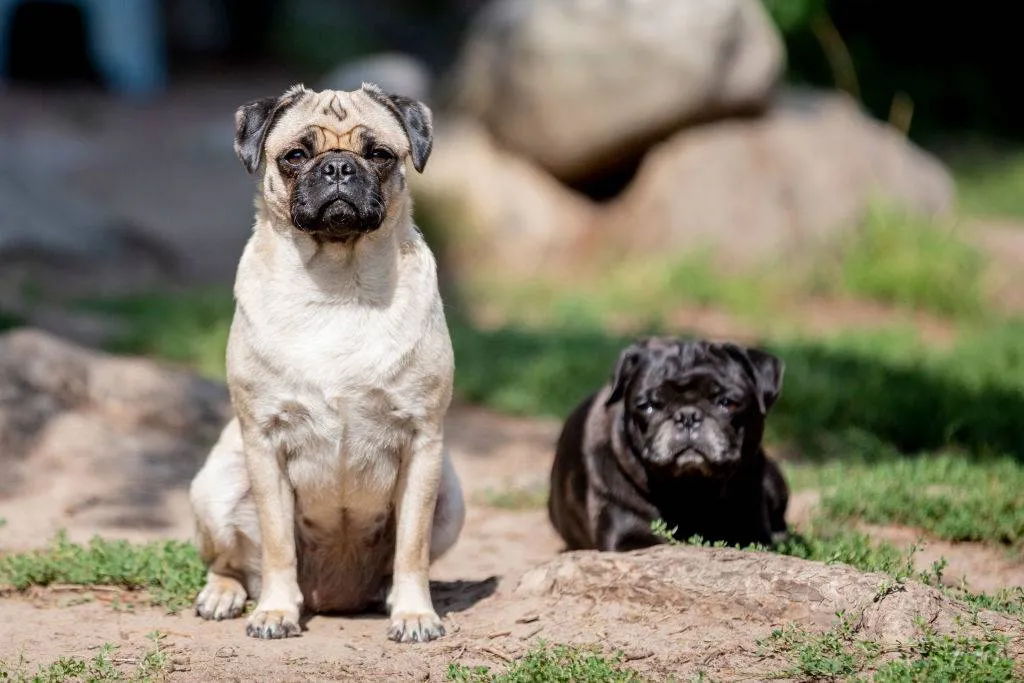
The Pugs did not always remain pure-bred Chinese dogs. Their signature brachycephalic (i.e., short and wide) snout is actually due to their inbreeding with somewhat smaller terriers. This modern iteration of the Pug became the standard for the breed, but it also brought about plenty of problems.
The snout's shape, for example, is responsible for a number of medical conditions to which the Pug is vulnerable, such as breathing difficulties, low oxygen intake, high blood pressure, heart disease, an inability to regulate body heat, and jaw and tooth problems. Furthermore, the Pug's overgrown skin leads to dermatitis, and its curly tail is associated with paralysis.
Shar-Peis Then
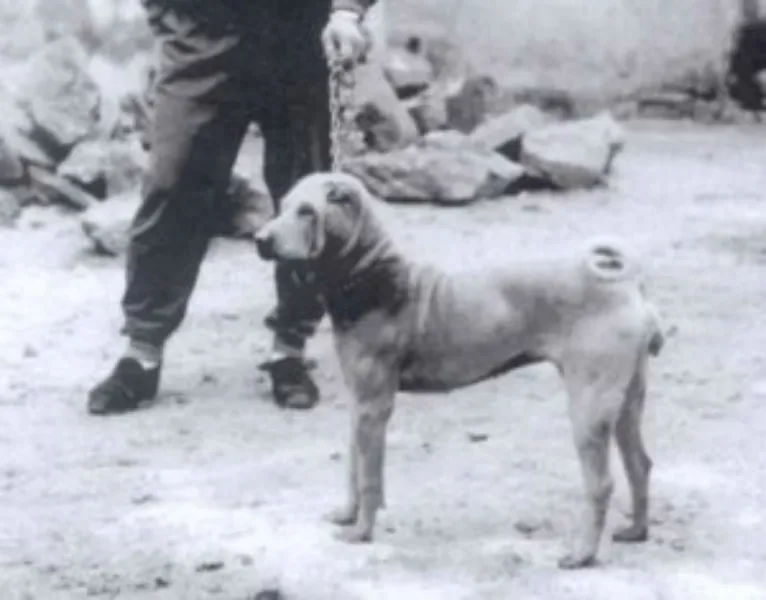
Shar-Peis, like Chow Chows, are one of the oldest breeds of dogs, and like Chow Chows, they too hail from China. Throughout the Han Dynasty and beyond, the image of the Shar Pei, much like Chow Chow's, was used to decorate various buildings and objects.
They were originally bred as hunting companions for hunting wild boars. Their loose skin and prickly fur assisted them in getting out of a boar's grip, and this same trait led to them being used as fighting dogs. The Western version of the Shar Pei, referred to as "meat mouth" by the Chinese, differs from the Chinese version, which the Chinese call "bone mouth."
Shar-Peis Now
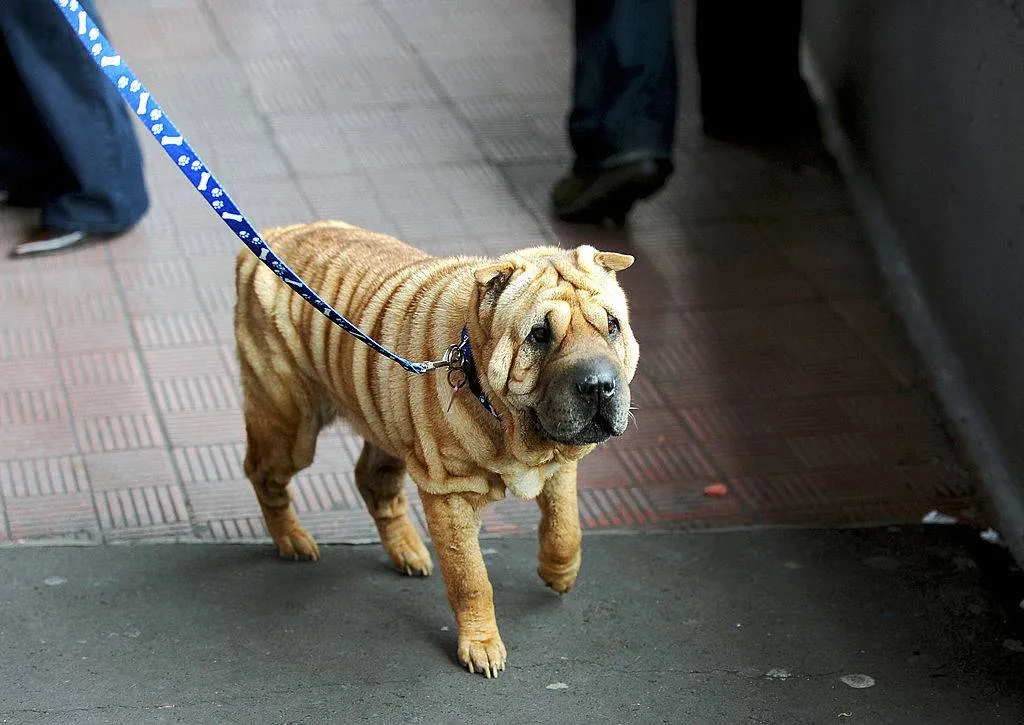
As with other dogs on our list, such as the Pug, the English Bulldog, and the Basset Hound, the modern, Western version of the Shar-Pei carries a hefty amount of excess skin as baggage. For some reason, modern breeders just love to heap excess dermatological surface area on dogs.
This obsession leads to the Shar Pei's vulnerability to allergic skin infections and ear infections (due to the excess folding of skin about the ears). Although American Shar Peis descended from the "bone mouth" Chinese variety relatively recently following a 1970s campaign to rescue these dogs from communist China, the unabated American desire for the "meat mouth" has already altered this breed.
St. Bernards Then

The St. Bernard breed is derived from the Molosser dogs that were originally brought to the Alps region by the Romans. The modern St. Bernard descends from canine heroes who would lead monks and other passersby through the Great St. Bernard Pass in the Swiss Alps.
One legendary St. Bernard named "Barry" was said to have rescued between 40 and 100 people. Interestingly enough, St. Bernards were not trained by the monks to carry out these heroic feats but learned their trade from older dogs. Unfortunately, an avalanche killed the majority of these working dogs during the nineteenth-century, which permanently altered the breed.
St. Bernards Now

Today's St. Bernards are not the same as the legendary Alpine heroes described in books and legends. Following the avalanche, what was left of the original population was crossed with imported Newfoundlands to make the breed what it is today.
These new dogs were incapable of search and rescue operations due to their massive size and heavy coat, which weighed them down greatly. Of course, that didn't stop the Swiss kennel clubs from prizing this massively oversized creation. Today's St. Bernard suffers from a host of ailments stemming from its baggy skin, narrow snout, and heavy coat, including a proneness to overheating and a susceptibility to eye problems and cancer.
Salukis Then

Salukis are a unique breed of dog. Not only are Salukis one of the oldest breeds around, but they were once considered a gift from Allah. You read that right—these large canines were once considered holy.
Salukis are known for their lean build. These pups are as skinny as supermodels, which also means they're fast, fast, fast. Coupled with their speed, Salukis are notoriously hard to train, which means they are not be trusted off their leash! Despite their tendency for not-so-wonderful behavior, these dogs are lovers at heart and are utterly devoted to their owners.
Salukis Now
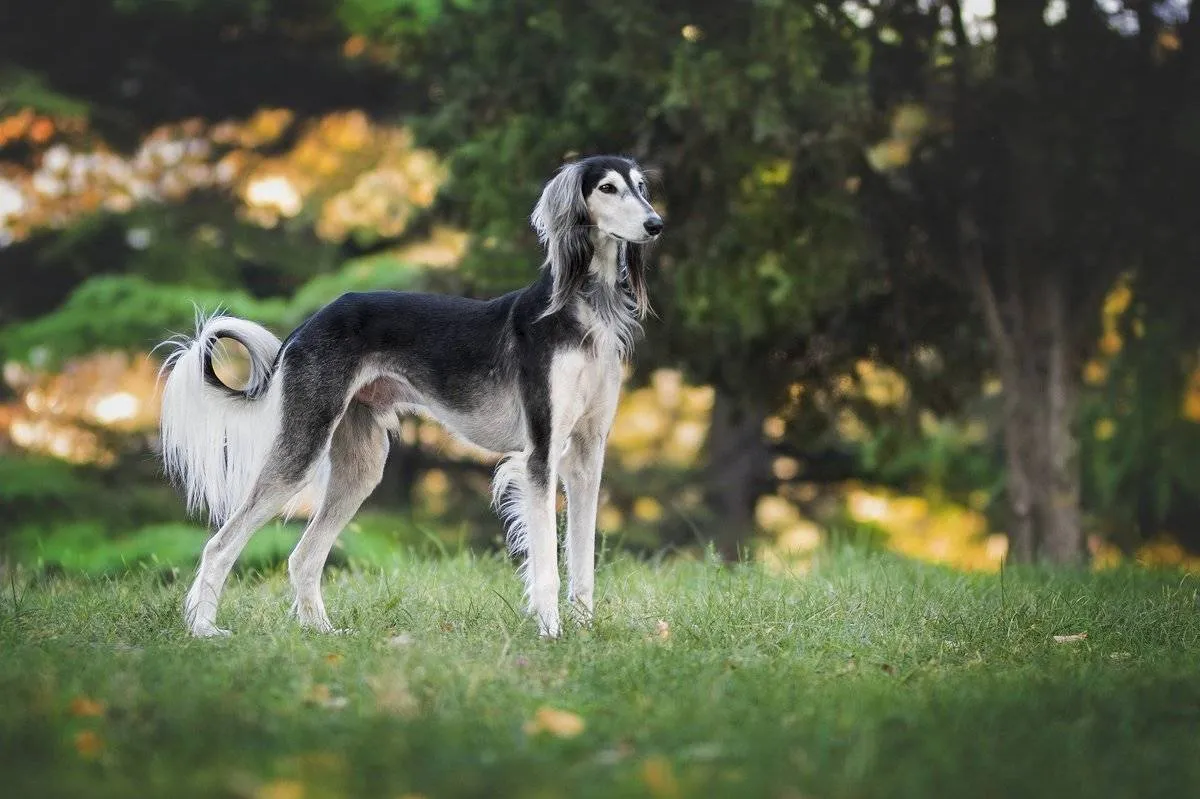
While Salukis today might not be considered holy gifts, not much else has changed. These pups are still known as being one of the leanest breeds out there. Salukis are still utterly devoted to their owners and are generally very friendly towards adults, kids, and other dogs. They're still slightly hard to train and should be kept on a leash while on walks!
Salukis have experienced the negative side of breeding firsthand, however. Because the Salukis of today have had their skeletal appearance enhanced, the breed also has a higher rate of heart-related health problems.
White Terriers Then

The best way to describe a White Terrier? Self-confidence! This doggo is one breed who isn't lacking in self-esteem, which is why the White Terrier been so popular for the last century and beyond. The most common White Terrier is the West Highland White Terrier.
Originating in Scotland, these pups were originally bred for hunting and ratling and even sometimes as search-and-rescue help! Their instinctive nature to capture fast-moving animals meant this breed was on the fastest and most agile 100 years ago.
White Terriers Now
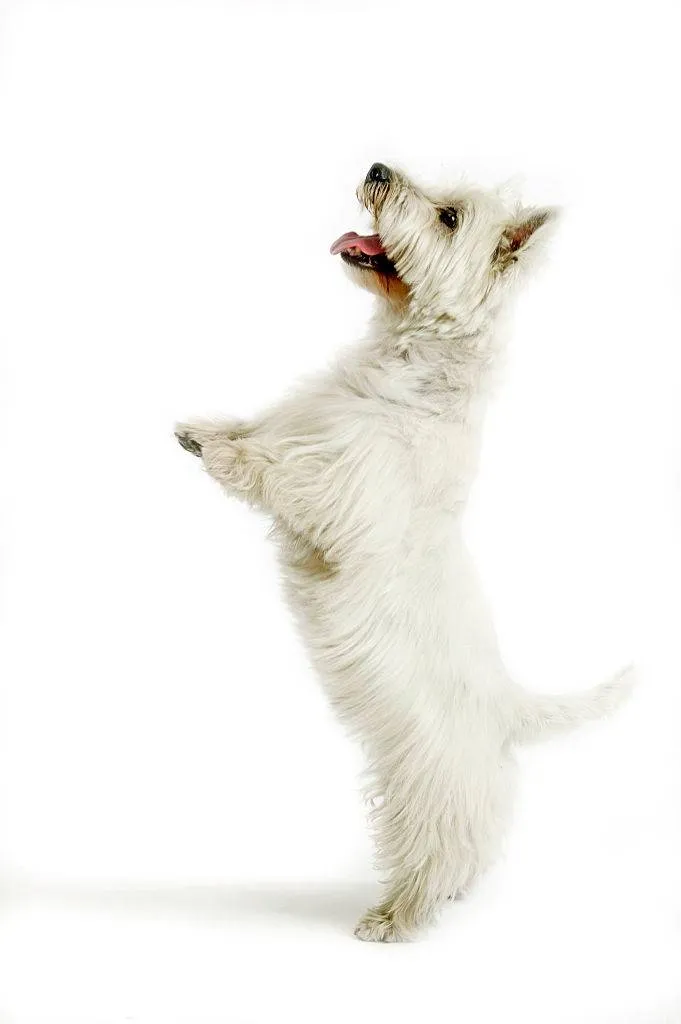
White terriers are seldom used for their original purpose of hunting and rattling and are bred to be a domesticated house pet. These pups are always on the lookout for a good time and are professionals when it comes to keeping themselves entertained.
When it comes to breeding, the white terriers of today haven't fared as well as some of the other breeds on our list. These pups used to be highly-functional and very athletic. A century of bad breeding practices has left them seriously affected and no longer able to follow their natural instincts due to intentional growth stunting.
Bearded Collies Then
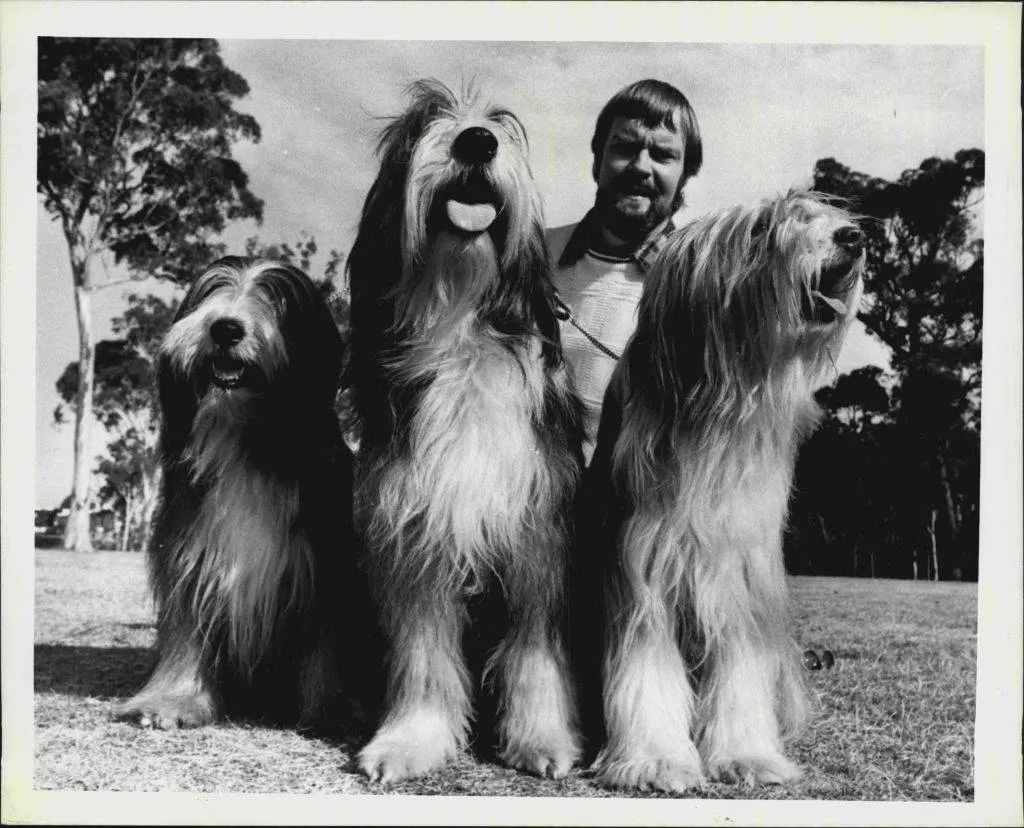
Bearded Collies were developed in Scotland and were originally intended to herd sheep and livestock in various weather conditions and terrain. Back in the day, these pups were known for their highly-energetic and friendly personalities which made them great additions farms as they could control the livestock without hurting them.
On top of having loads of energy, Bearded Collies were very obedient and loveable and were considered all-around great animals.
Bearded Collies Now

One look at this photo of a Bearded Collie from a century ago and it's easy to see how much they have changed over time. Due to a century of questionable breeding, Bearded Collies have taken on a much different appearance. Today, they are shorter and slightly stockier than they used to be. Although they do not experience any severe defects due to breeding, many Bearded Collies experience allergies.
Although they have experienced some of the negative effects of dog breeding, this pup is still known for being one of the friendliest breeds out there. They're easy to train and are endlessly loyal to their owners. You just have to be willing to tolerate lots of shedding!
Airedale Terriers Then
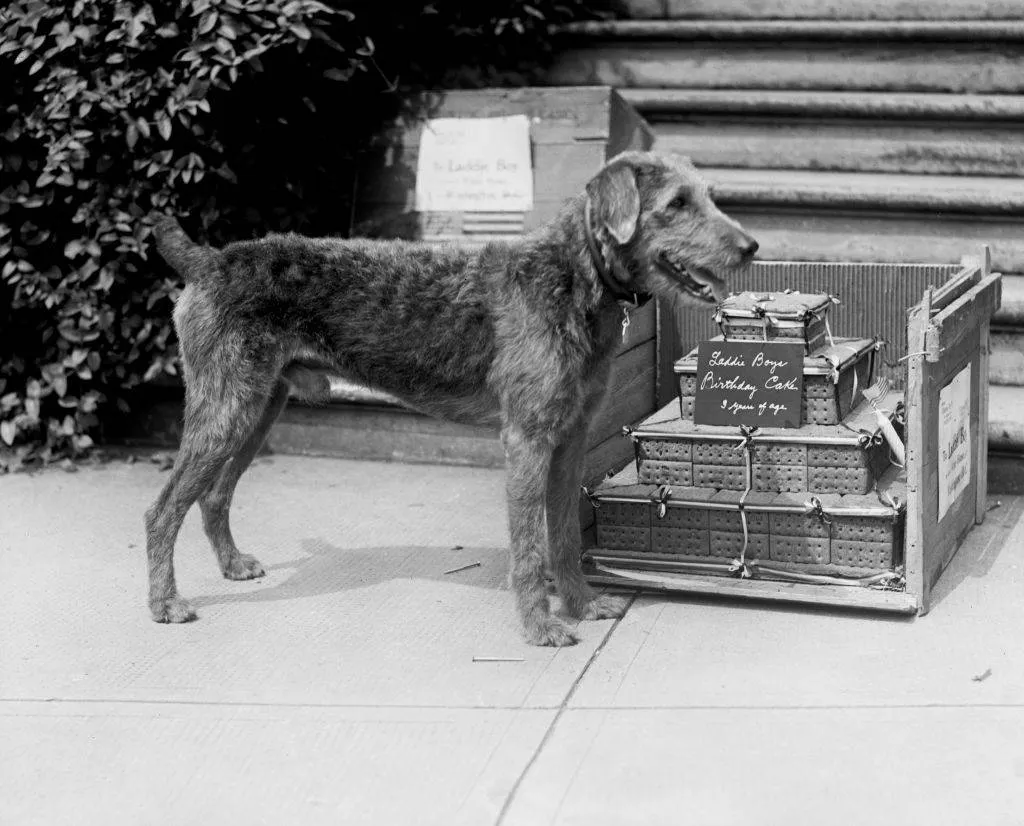
Airedale Terriers are the largest of all of the terrier breeds and are known as the "King of Terriers." Originating in the Aire Valley of Yorkshire, these dogs were bred to catch otters, rats, and other critters in the region between the Aire and the Wharfe Rivers.
Because Airedale Terriers were such ideal working dogs, they were heavily used as help dogs in World War I, delivering messages to British headquarters. On top of being intelligent, outgoing, and confident, Airedale Terriers are also playful and very loyal to their owners.
Airedale Terriers Now

Visually, Airedale Terriers have changed quite a bit. Their faces and bodies are far less angular than they used to be 100 years ago and their fur is longer and coarser. Today, their demeanor is very similar to how it was a century ago. These pups are still known for their intelligent, outgoing, and confident personalities.
They thrive when they feel like there is a job to be done—even if that job is something as simple as entertaining their owner! The independent dogs are truly a breed to behold. Smart, obedient, and playlist; they're an all-around great breed.
Shetland Sheep Dogs Now

Modern-day Shetland Sheep Dogs are much larger in size than they were 100 years ago. In fact, Shelties are more than double in size on average! Today, the average Shetland Sheep Dog weighs at least 20 pounds though not much taller in height. One of the most noticeable differences in their fur.
In 1911 when they were first recognized by the American Kennel Club, their fur was medium length. Today, however, a Shelties' fur is longer and much more lustrous. This also means they shed much more. As they were 100 years ago, these pups are still known for being alert, friendly, and smart.
Beagles Then
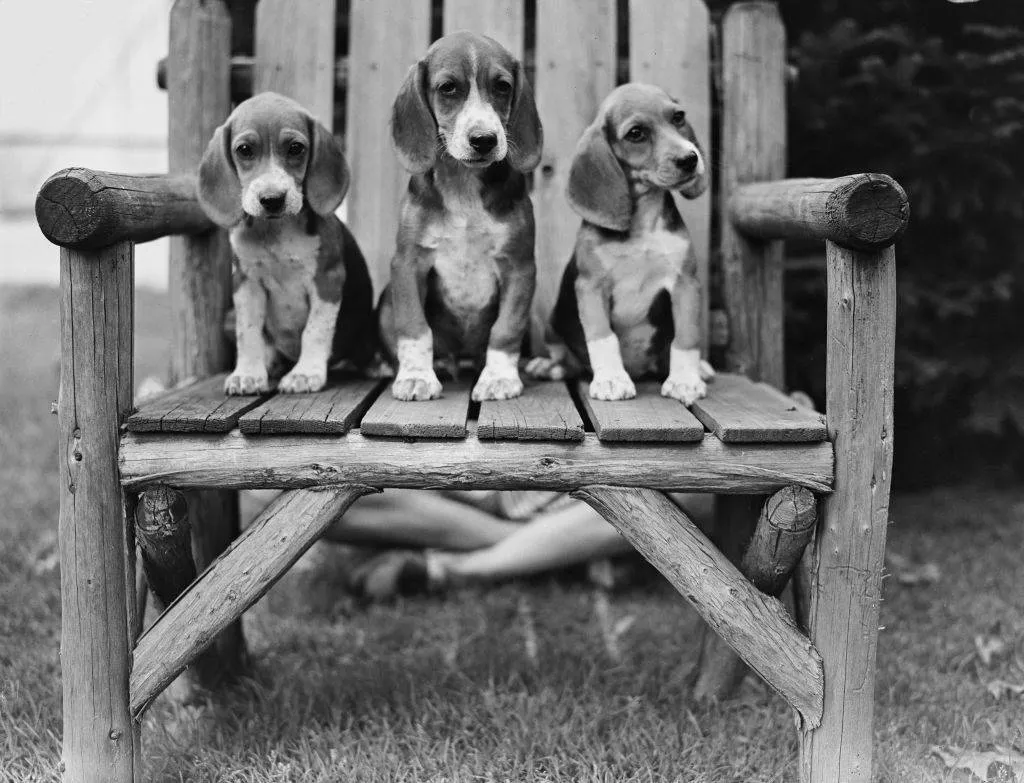
The earliest dogs that were referred to as Beagles were small enough to fit in the palm of your hand! The teeny tiny pups stood at just eight inches tall, but as they increased in popularity, so did their size.
There is little information on Beagles' origin, but it is believed they were used for hunting in Greece as early as the 5th century BCE. Eighth-century Beagles were known as scent hounds and were heavily used for hunting, despite being slow runners. It is said that Beagles were sometimes bred with Greyhounds in the hopes of increasing their speed and agility.
Beagles Now
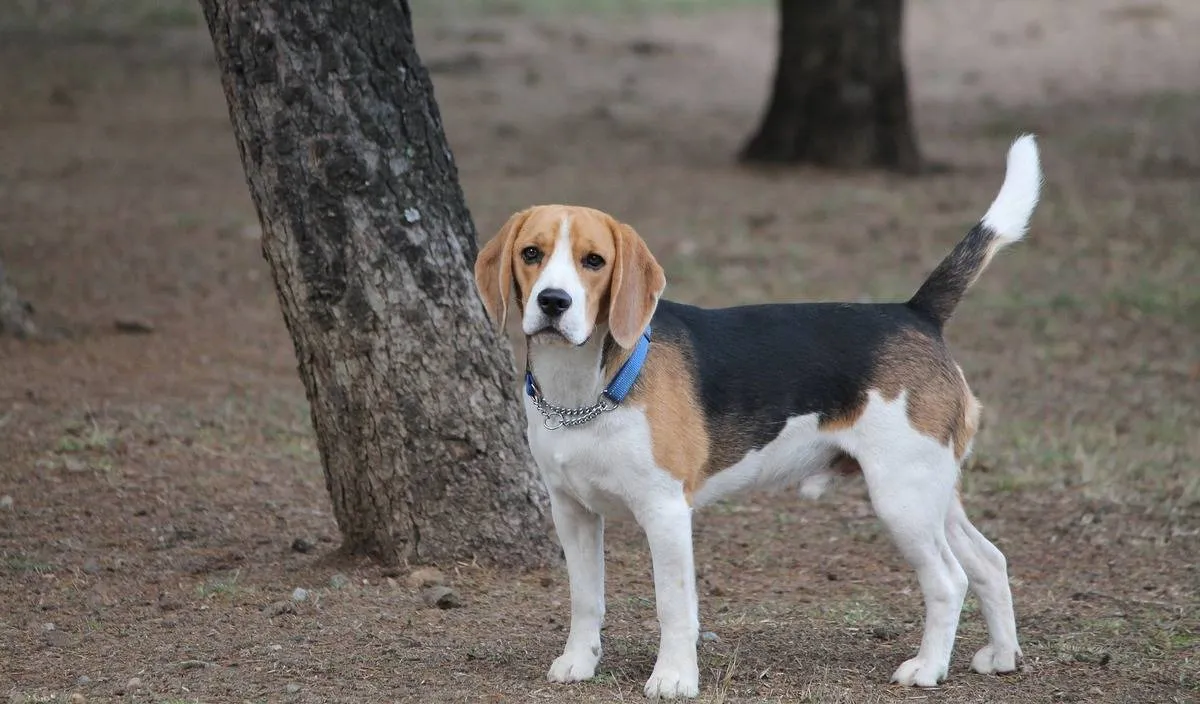
As Beagles have been bred with good and bad practices over the last 100 years and more, the breed has seen significant changes in their appearance and personalities. Today, Beagles are far larger than the pocket-sized canines they used to be.
As demand grew for strong hunting dogs, Beagles were bred with other breeds largest in size and agiler in nature. Their faces are wider set and they can grow to be up to 30 pounds. As far as their demeanor goes, Beagles are inquisitive, determined and highly motivated by food—aren't we all?!
Poodles Then
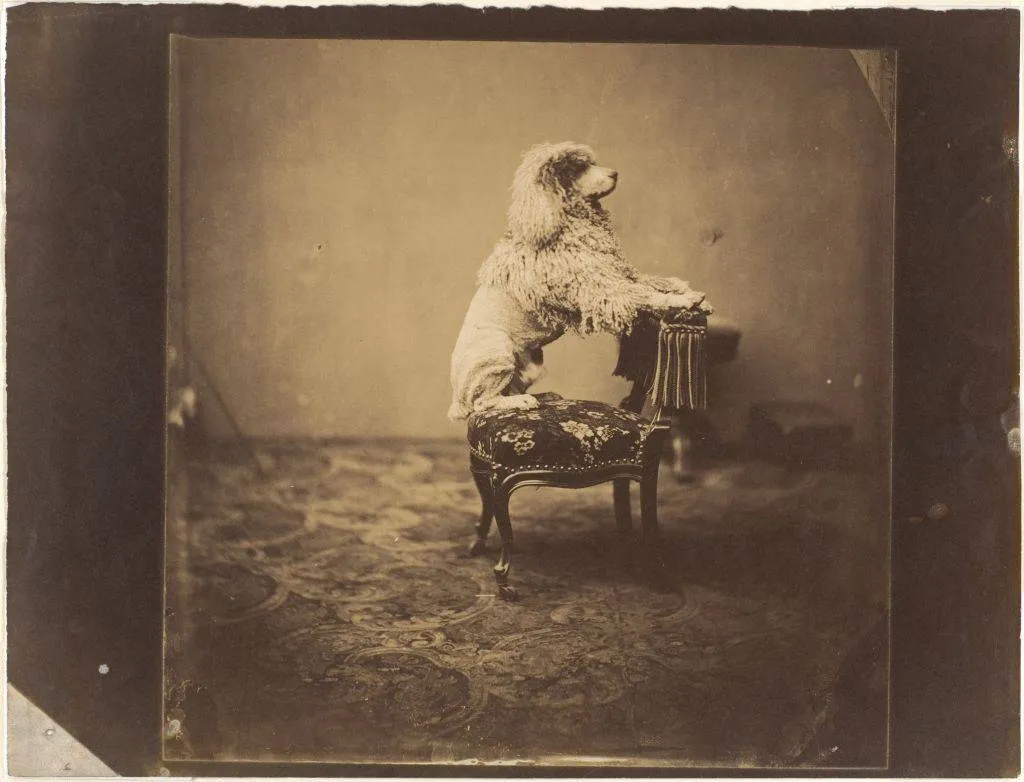
The origin of the Poodle has been disputed for many years. While some believe that the breed descends from the old French Barbet breed, other believe Poodles hail from Germany and were originally created to be a type of water dog. In any case, these dogs are ranked the second most intelligent breed, just behind the Border Collie.
Poodles are very skillful when it comes to a variety of activities such as agility, obedience, tracking, and herding. Despite the Poodle above's posh looks, these dogs were very useful for a variety of different tasks. Some even performed in circus rings back in the day.
Poodles Now
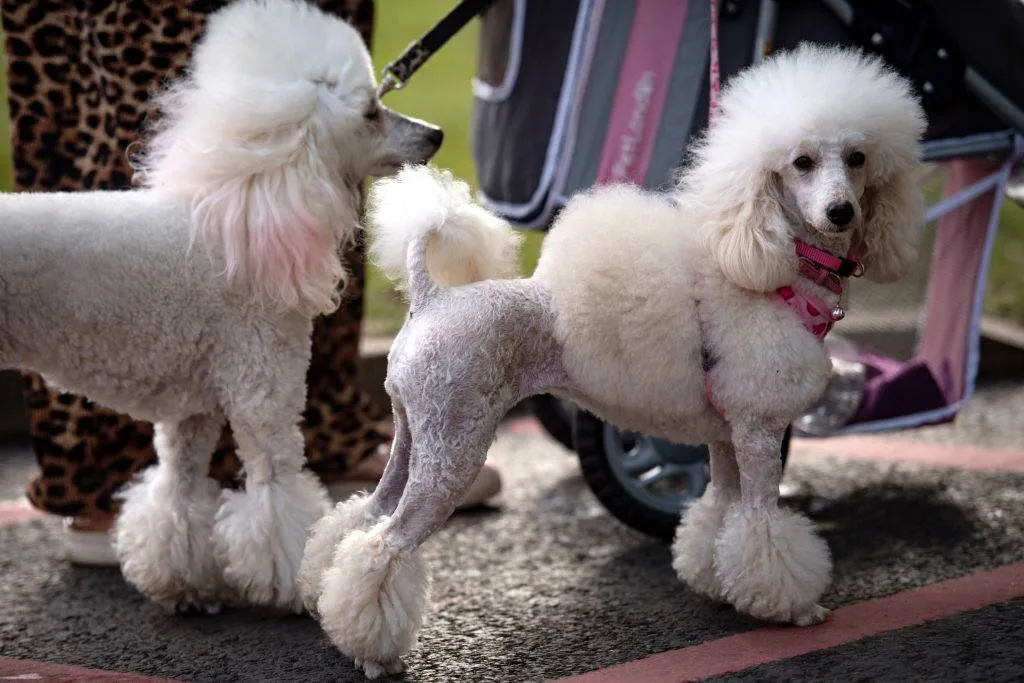
Despite being portrayed as dogs who live lives of glamour and luxury, poodles are anything but divas. Much like their ancestors, this breed will still complete a job when given the task.
Sure, Poodles may look primed and primp with their manicured nails and pink bows, but these dogs can still be trained to perform a variety of duties like they were 100 years ago. Today, however, you are far more likely to see Poodles in a variety of sizes as there are Toy, Miniature, and Standard Poodles.
Bedlington Terriers Then

Bedlington Terriers originated in North East England to kill vermin and to be a sidekick for poachers. These beautiful dogs were great options for these duties because they excelled as companions and had excellent hunting instincts. Their keen sense of smell coupled with their willingness to get down and dirty made them a poacher's best friend.
On top of these duties, Bedlington Terriers were often used in dog racing, dog sports and in conformation shows. Another fun fact about these pups is that they were excellent swimmers back in the day too.
Bedlington Terriers Now

Bedlington Terriers' appearance has changed a lot over the last century in comparison to other dog breeds. The Bedlington Terriers used to be much larger and stockier, but today, they look closer to a Dandie Dinmont Terrier, Whippet, or Otterhound—three dogs of which Bedlington Terriers are in fact related to!
Bedlington Terriers are known for their lamb-like appearance as well as their entertaining yet opinionated behavior. These dogs are inquisitive, intelligent, alert and still take a cue from their old hunting ways since they are still aggressive towards small animals.
Fox Terriers Then
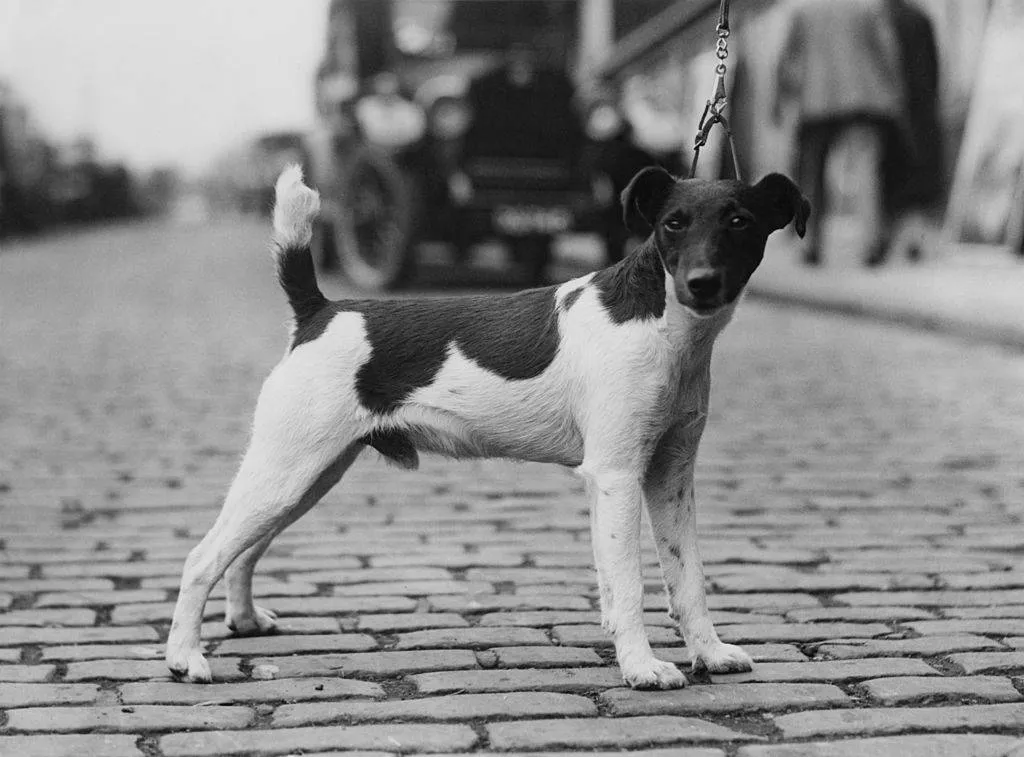
Fox Terriers were originally bred to provoke foxes out their hiding places. These agile pups were great at burrowing and catching foxes, making them an obvious choice for a hunting companion.
When they began being used less frequently for hunting purposes, Fox Terriers found themselves a top contender in a variety of dog shows. Although Fox Terriers are still since in dog shows around the world today, they are much different than the Fox Terriers of the early 1900s.
Fox Terriers Now
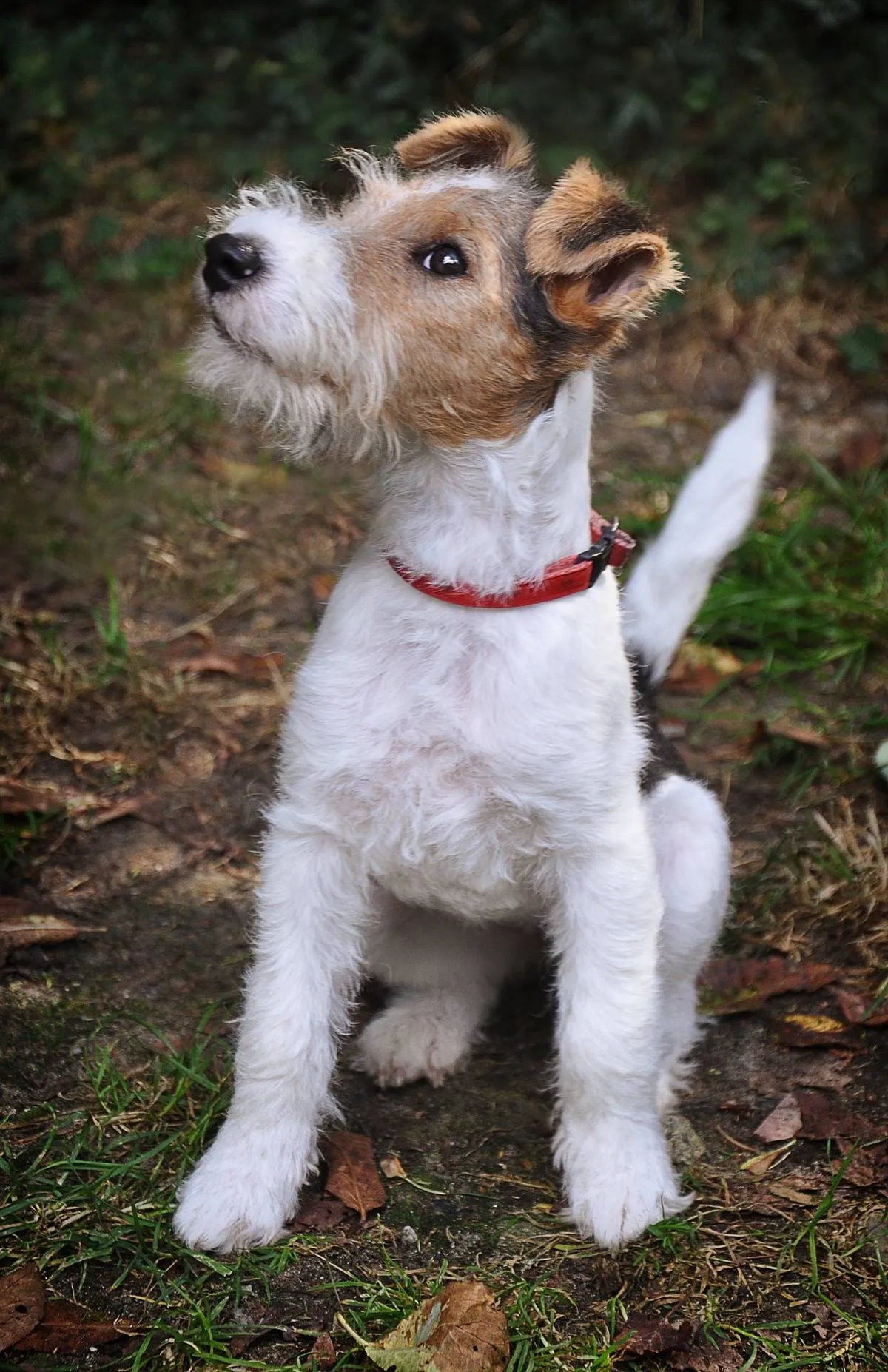
Today, Fox Terriers are much different than they were 100 years ago thanks to breeding. There are now two types of Fox Terriers: Smooths and Wires. Smooth Fox terriers are sleek, elegant and intelligent. Wire Fox Terriers are handsome and happy-go-lucky creatures and look adorable when properly groomed.
Although both types of Fox Terriers differ slightly in demeanor they are both active, curious and friendly. These pups haven't lost their abilities in the agility department either and would make for great hunting partners to this day. Not going hunting anytime soon? Then keep these little guys on a leash!
Australian Cattle Dog Then

When settlers came to Australia, livestock was brought with them livestock and sheepdogs to help herd. Sadly, these dogs could not get the job done in the Australian terrain. A guy by the name of Timmins tried to breed the perfect herding dog but it would take years before the model herding dog came around.
Breeders kept trying until they mixed dingoes with blue merle collies. That combination was not the one yet but it was getting there. Finally, soon after 1870, Jack and Harry Bagust wanted to improve the breed by crossing a Dalmatian but that caused the dog to lose some working ability so a black and tan kelpie was added to mix. The result, an Australian cattle dog.
Australian Cattle Dogs Now

These pups are survivors. They are one of the oldest dogs in the world. One of them was born in 1910 and was chasing sheep for nearly 20 years!
In 2009, an Australian cattle dog named Sophie lived through the ultimate canine survival tale," wrote Rebecca O'Connell. "While on a boat with her family off the coast of Queensland, Australia, the dog was thrown off when the craft hit a rough wave. The resilient pup swam five miles back to shore and ended up on St. Bees Island, an island inhabited mostly by wild horses. Sophie managed to stay alive by hunting feral goats. Eventually, she was nabbed by a ranger and reunited with her family."
Greenland Dog Then
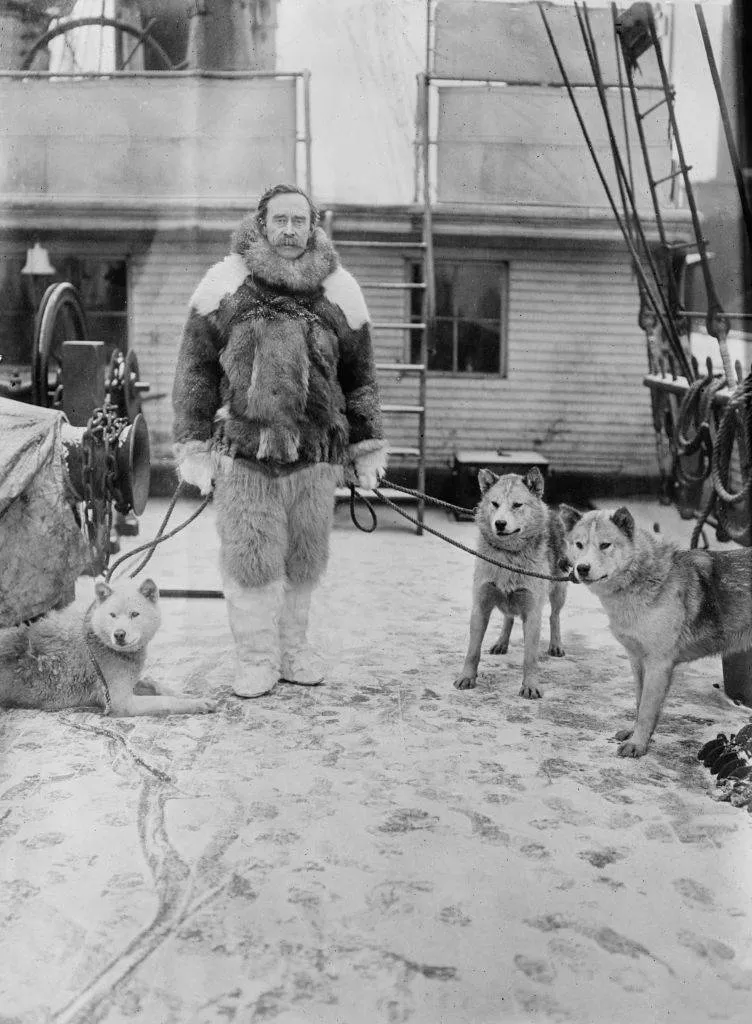
The history of this dog dates back nearly 12,000 years when primeval tribes would bring them in. These people would later become modern Eskimo people. The local wolves would serve as "fathers" in the process of breeding. The native dog started off as a sled dog for transportation and for hunting local animals for food.
When the 1900s came around, the Siberian Husky and Alaskan Malamutes started to rise in popularity but explorers chose to stick with the Greenland dogs. Explorers and surveyors especially liked Greenland dogs, as they were the best breed for assisting in them in the cold and mountainous conditions.
Greenland Dog Now

If you're looking for a loyal dog than look no further because this breed is extremely dedicated to a specific owner. However, they lack protective instincts, so they don't make the best guard dog. Due to their history, Greenland Dogs carry a close temperament to wolves and have an alpha pack instinct that's very prominent. These dogs are independent and love to roam around. They enjoy cold and mountainous open areas, closest to their natural habitat. As far as hiking in the wilderness goes, this is man's best friend.
Red And White Setter Then

There was a point in time when these great dogs were at risk of extinction but the breed luckily made a comeback. In the 17th century, breeders mated different varieties of Setters with dogs adapted to work in the weather conditions of Ireland, England, and France. Then during the 19th century, the Setter started gaining mass popularity and soon became the most abundant variety.
Then came the 20th century and the World Wars which brought an immediate threat to these dogs. Thanks to Rev. Noble Huston, a limited number of the Setter survived extinction in Ireland. By the '80s, the number of them slowly increased.
Red And White Setter Now
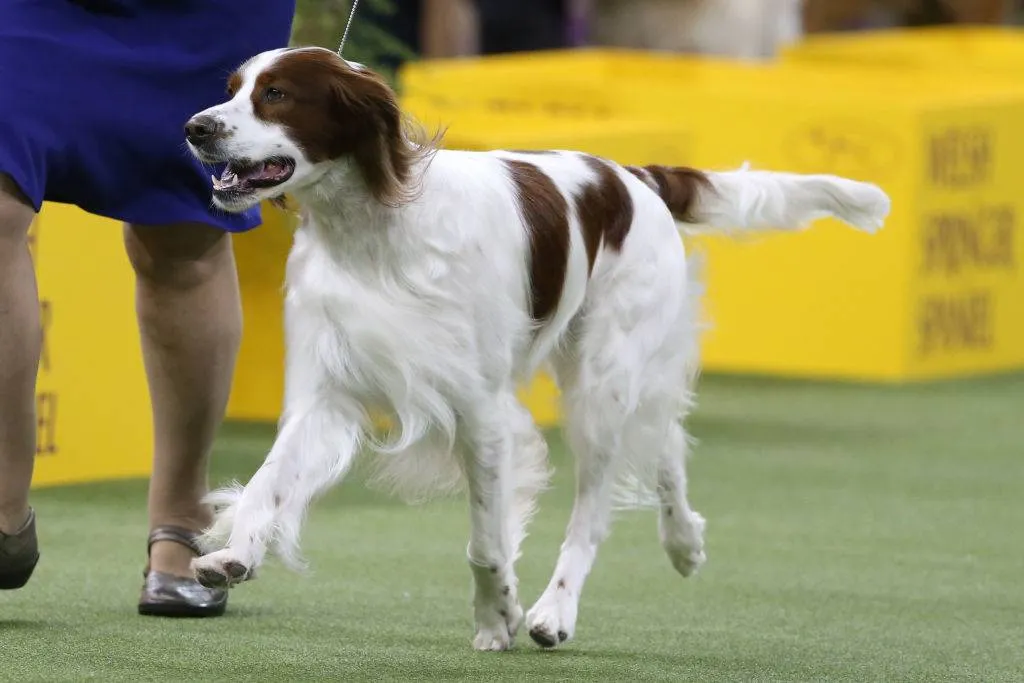
These dogs are highly powerful. Their appearance is well-proportioned and athletic with no coarseness. They are bred for hunting and have a muscular neck and well-muscled legs. It would have been a shame if they ended up going extinct.
"Being devoted, friendly, and spirited by nature, the Red and White Setters are a joy to own," reported 101Dogbreeds. "They display courage, determination, and high spirit, implying that they can become reckless and destructive if not given the required amount of physical and mental exercise. They need an outlet to burn off their extra energy and are thus suitable for active families."
Scottish Terriers Then

Scottish terriers were originally bred to hunt prey likes badgers and foxes. Their independent, self-directed behavior nature made them great hunting companions. But when they weren't hunting, these short-legged companions were also extremely sweet and loyal.
Back in the day, Scottish Terriers were considered one of the smartest kinds of terriers. Their quick-witted and curious attitudes meant they weren't to be trusted alone and often has fellow animals to play with. While they did take a long time to open up, once a Scottish Terrier rusted you, you were friends for life! But what about today?
Scottish Terriers Now

Scottish Terriers have fared well in term of breeding. Today, Scottish Terriers aren't much different than they were 100 years although. Although most are domesticated, family pets, these pups are still known for their qualities that made them great hunters decades ago.
Scottish Terriers are still physically very similar. They have short legs but are still a very agile breed. Although Scottish Terriers may not hunt as much as they used to, they still love to burrow and dig holes around the yard and probably don't quite understand that you don't like it!
Chinooks Then
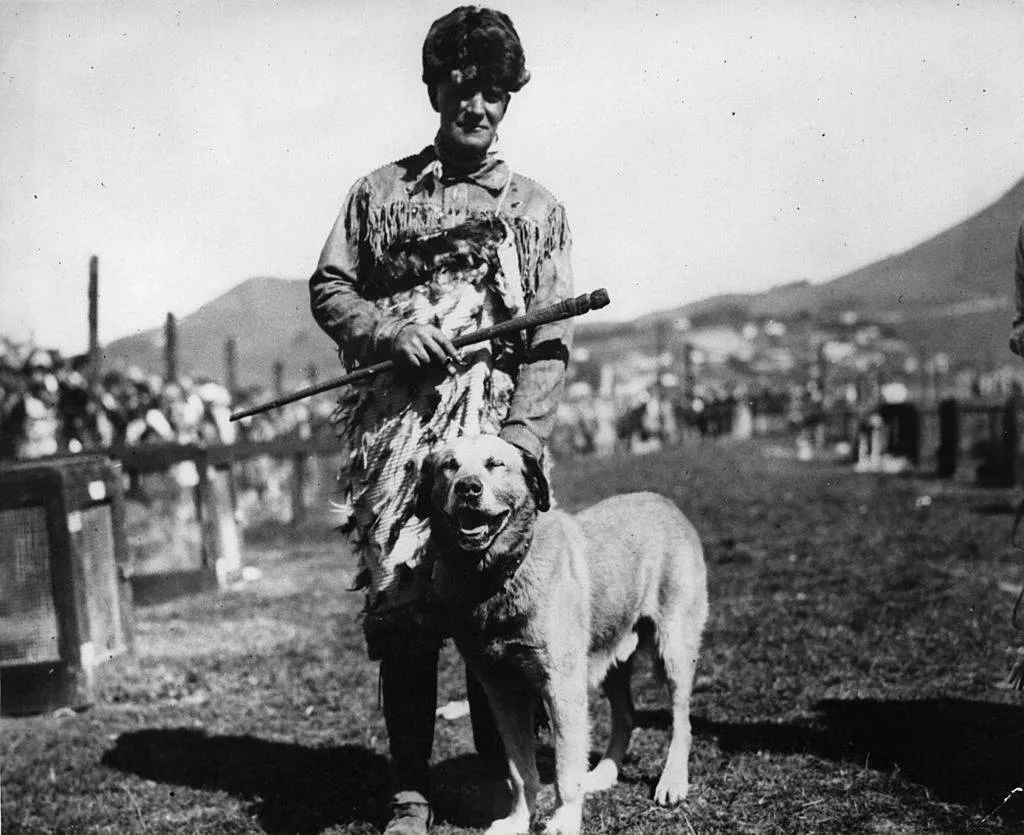
Chinooks originated in the mountains of New Hampshire. This handsome breed made his name on Admiral Byrd's first Antarctic expedition in 1928—and he was a great companion. Thanks to the Chinooks' large skillset, these dogs were a very well-rounded breed.
They could accompany their companions on lengthy hikes and sled rides and could take home the win in agility and other dog sports. But work and competitions aside, Chinooks were known for being great family dogs too.
Chinooks Now
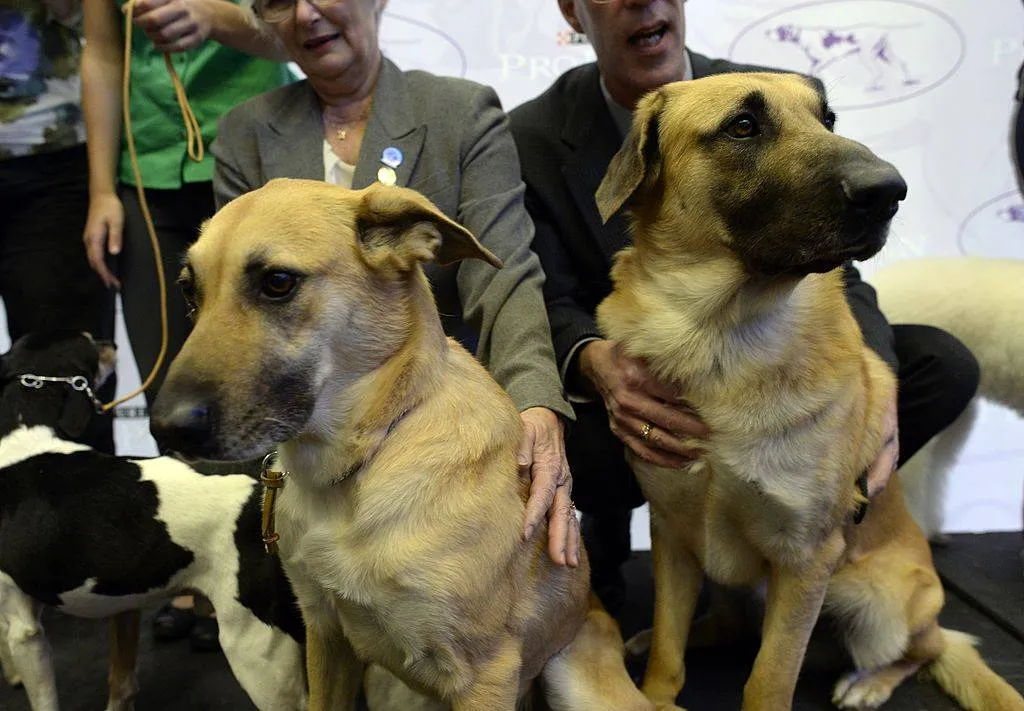
Although Chinooks were bred to have agility and stamina when it came to pulling a sled, their days of expeditions are long over. Today, Chinooks are considered the consummate companion, They are a very versatile pup—atheltic and agile, while still being sweet and loyal to their owners.
Chinooks are one of the least aggressive breeds out there, so if you're looking for a guard dog, you've come to the wrong place! Chinooks are a rare breed to find, and if you want one you will likely have to wait at least six months. These dogs are not to be bought from a breeder to ensure they don't pass on genetic diseases.
Borzoi Then

Borzois were developed in Russia as coursing and hunting dogs. The hounds were used to hunt in teams of three to catch rabbits and other quick animals. They preferred a fast sprint as opposed to long runs, which made them the perfect option for hunting.
With their tall, lean bodies, the Borzoi was the picture of elegance, so it's not surprising that this breed soon became popular across Russia and Europe amongst high-class citizens. These dogs walk with confidence, so it's not hard to imagine them walking to halls of a dignified mansion or running freely in the countryside.
Borzoi Now
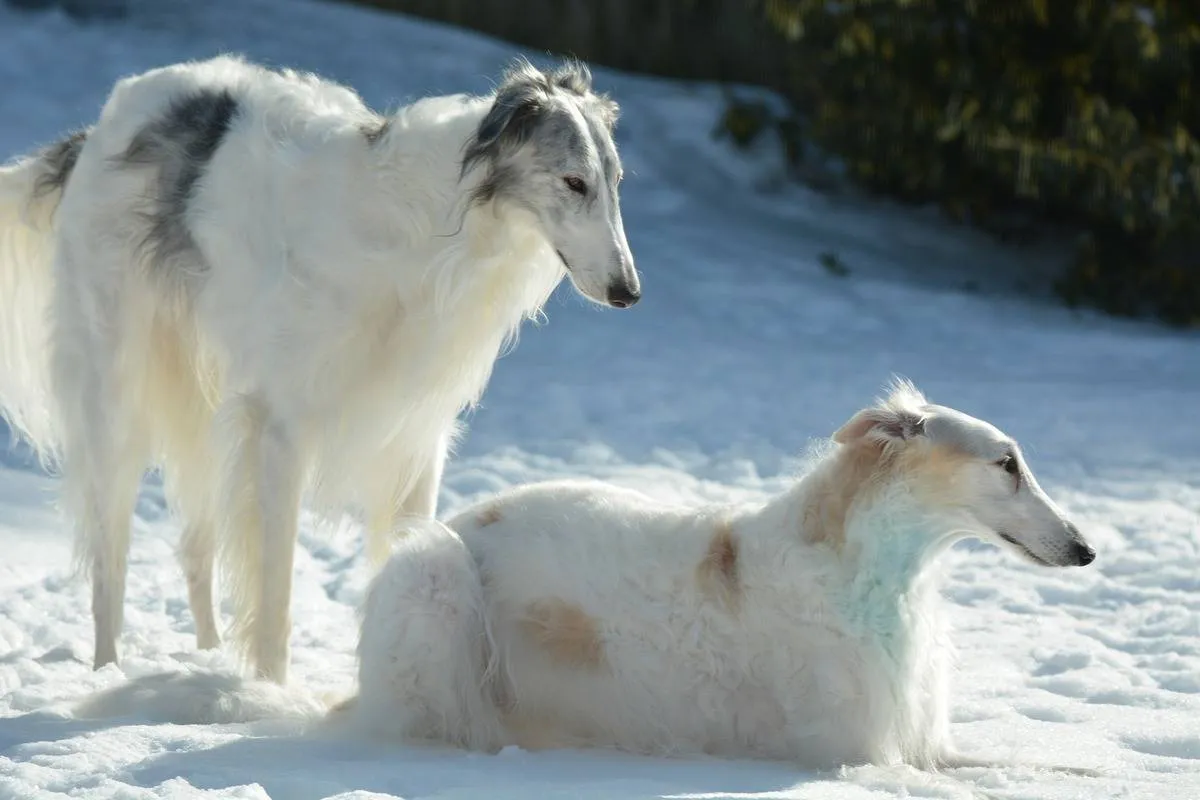
Today, Borzois days of hunting are long over. Instead, Borzois most important job is to be a family friend. These gentle giants are sweet and laidback, and can often be found lounging lazily on the sofa. With their luxurious coats, Borzois are truly a sight to behold and still maintain the regal look they had a century ago.
This breed has fared well amidst bad breeding practices and today is one breed that is hard to come by. Borzoi seekers can expect to wait a long while before coming across a purebred Borzoi, but these beautiful creatures are worth the wait.
Dalmatians Then
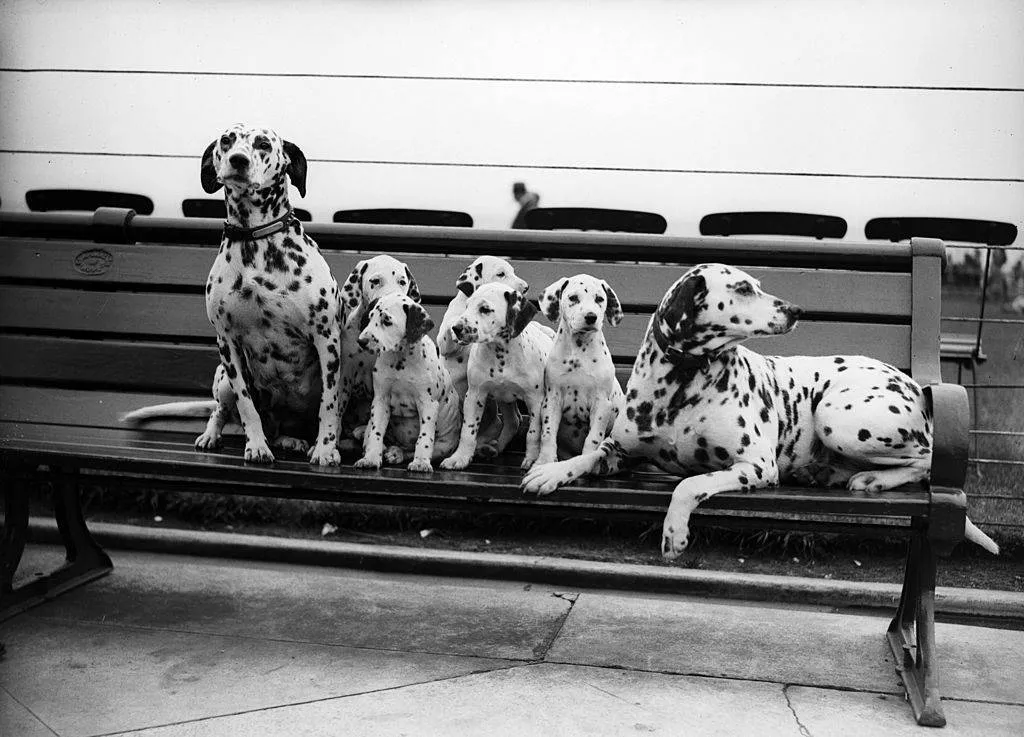
Dalmatians were created to run for long distances alongside carriages. This was intended to help ward off highwaymen while adding a touch of flair to aristocrats' vehicles.
Even 100 years ago, people were attracted to these dogs for their stunningly contrasted coat of black and white fur. And who could blame them for admiring their gorgeous spots? Not only were Dalmatians great at running, their high energy meant they loved to play alongside children and adults alike.
Dalmatians Now

Dalmatians are still highly sought after for their beautiful spots. But if you're looking to adopt a Dalmatian today, there are some things to keep in mind. These dogs are very intelligent and highly energetic as they were a century ago.
Their high energy means they are best suited to live somewhere with lots of space and in an environment where a human or other dog is around most of the time. It's also important to keep in mind that these dogs are prone to deafness. This is sadly a result of an inherited polygenic trait.









